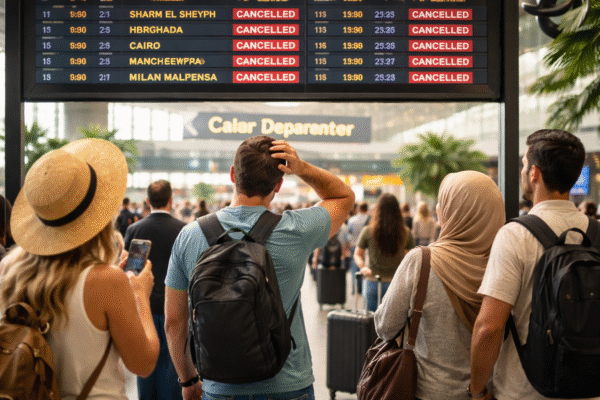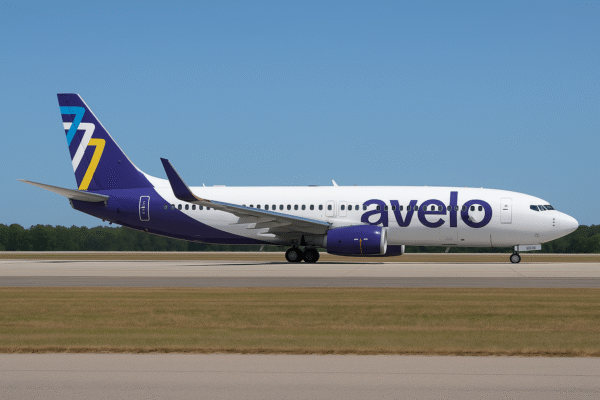In a bold move to stay agile in the competitive U.S. aviation market, Avelo Airlines is set to realign its operational focus in 2025. By prioritizing high-demand travel corridors and scaling back low-performing routes, the low-cost carrier is positioning itself to enhance service reliability, tap into bustling hubs, and solidify its growing market share.
Currently operating a fleet of 22 Boeing aircraft—including 14 Boeing 737-800s and 8 Boeing 737-700s—Avelo’s strategic reconfiguration coincides with the arrival of its latest aircraft, N810VL, formerly operated by Gol Linhas Aéreas, in July 2025. This addition underscores the airline’s ongoing fleet modernization and commitment to increasing operational capacity.
Fleet and Capacity: Balancing Expansion with Efficiency
While Avelo’s aircraft average age ranges from 15.9 years (737-800) to 19.2 years (737-700), the airline has successfully maintained operational efficiency across its growing base. In September 2025, Avelo plans to offer 233,000 round-trip seats, a 4% decrease from the same period in 2024. This contraction stands in contrast to the 1% growth in overall U.S. domestic capacity and a notable 65% seat expansion by competitor Breeze Airways.
The slight reduction reflects Avelo’s recalibration toward more lucrative destinations, rather than an overall pullback in ambitions.
Strategic Airport Adjustments: Growing Where Demand Surges
From Boise and Chicago Midway to Savannah, Avelo is ceasing operations in underperforming markets. This has led to a slight decline in the number of airports served—from 43 in 2024 to 41 in 2025. However, the airline is simultaneously increasing its presence in major metropolitan airports, such as:
- Chicago O’Hare International Airport (ORD)
- Dallas/Fort Worth International Airport (DFW)
- Detroit Metropolitan Wayne County Airport (DTW)
These expansions aim to secure greater market penetration in bustling hubs, optimize fleet utilization, and unlock new travel demand opportunities for leisure and business flyers alike.
Nashville: A Standout Performer in the 2025 Network
Among all U.S. cities, Nashville International Airport (BNA) is experiencing the most dramatic capacity increase within Avelo’s portfolio. Seat availability has surged nearly 400% year-over-year, rising to 20,300 seats in September 2025—up from a single route last year to five active routes today.
Though Avelo’s share at BNA remains modest compared to larger carriers, this substantial increase represents its bid to capture a foothold in one of the Southeast’s most dynamic tourism and business hubs.
Tweed New Haven Airport: The Operational Heart of Avelo
Despite a 12% capacity reduction, Tweed New Haven Airport (HVN) remains the cornerstone of Avelo’s network, offering 112,000 seats in September 2025. The airline continues to operate 12 routes, although it has dropped five, including:
- Chicago Midway (MDW)
- Destin-Fort Walton Beach (VPS)
In their place, new routes to Chicago O’Hare, Dallas/Fort Worth, and Detroit have been introduced—aligning with Avelo’s larger pivot toward key metro airports.
Wilmington, North Carolina, remains the airline’s second-most important hub, playing a pivotal role in its Southeast U.S. network.
Market Realignment: Reductions in Orlando, Burbank, and Greenville-Spartanburg
While Avelo is expanding in certain cities, some airports have seen scaled-back operations:
- Orlando International Airport (MCO): Seat capacity cut by 25%, dropping it from the fifth to ninth most-served airport in Avelo’s network.
- Burbank (BUR) and Greenville-Spartanburg (GSP) have also experienced reductions, though not full route eliminations.
Interestingly, Avelo is boosting service in Lakeland, Florida, a smaller airport close to Orlando, suggesting a micro-targeting strategy in regions with growing suburban demand.
Industry Positioning and Competitive Outlook
As the U.S. domestic airline industry continues to rebound, Avelo’s strategic repositioning highlights a trend among low-cost carriers: focus on volume-rich corridors, streamline operations, and reduce overexposure to volatile, low-yield destinations.
The realignment comes as part of a broader effort to remain cost-effective while delivering reliable service amidst changing passenger behavior and evolving travel patterns post-pandemic.
Conclusion: Avelo Airlines Charts a Strategic Course for Sustainable Growth
Avelo’s 2025 roadmap reveals a laser focus on sustainability and scale. By expanding in strategically important urban markets while trimming routes with lower profitability, the airline is improving its network’s overall strength and performance.
With continued investment in modernizing its fleet, enhancing services at core hubs like Tweed New Haven, and rapidly expanding in Nashville, Avelo is positioning itself to thrive in the highly competitive low-cost U.S. aviation market.
Whether travelers are heading to major business centers or emerging regional destinations, Avelo’s 2025 strategy aims to deliver cost-effective, accessible, and more convenient air travel across the nation.
For more travel news like this, keep reading Global Travel Wire


















